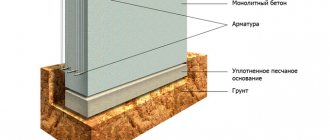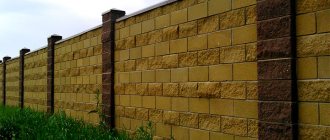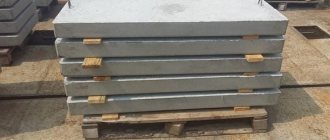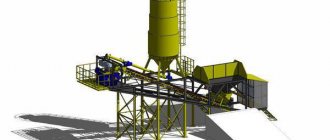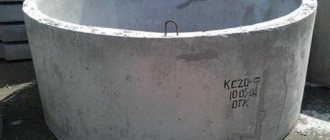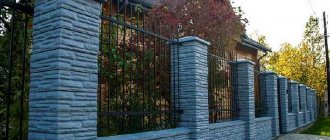Periods of development
By 1915, virtually all states, including the Celestial Empire, had “stone” boats (in individual copies). Leading European countries developed this type of shipbuilding until the beginning of 1919. There were reasons for this: an acute shortage of steel, the need for large carrying capacity.
According to certain information, the total tonnage of concrete ships built during the mentioned period of time exceeded 600 thousand tons, their total number exceeded a thousand. As for the types, these were longboats, self-propelled ferries, cargo barges, fishing vessels and even oceangoing vessels. The next wave of demand for concrete ships came during World War II.
Return to contents
Advantages
The ability to hire workers who had no previous experience in shipbuilding.
Experts consider the following advantages of reinforced concrete ships:
- significant savings in metal used in the structure (the hull requires one and a half to three times less than for a steel vessel);
- speed and low cost of construction;
- availability of materials;
- the ability to hire workers who had no previous experience in this industry;
- non-susceptibility of the housing to corrosion, lower repair costs;
- fire safety.
Return to contents
Flaws
- Such vessels have a greater draft due to a heavier hull.
- Such structures are much less resistant to directed dynamic loads (for example, impacts during mooring, grounding, collision with ice, etc.).
- It is not easy to modernize ships, to add new elements to concrete.
- The success of construction is too dependent on natural conditions (working with reinforced concrete at low temperatures is difficult or completely unrealistic).
Return to contents
First and legendary
Parisian curiosity
In 1850, the Frenchman Lambo made a boat from wire mesh coated with cement mortar.
The idea of combining cement mortar with a metal mesh to build a floating craft first came to a French lawyer named Jean Louis Lambeau. His boat was exhibited at the Paris World Exhibition (1854) as a technological miracle. He presented his invention - a frame made of wire mesh covered with cement - as something that could replace wood, which does not tolerate dampness well. The unusual product aroused genuine interest among visitors (they spent a long time looking at the strange exhibit). But sources differ regarding the opinions of experts: according to some, the know-how was not appreciated, while others claim that it gave impetus to the creation of a whole host of similar boats.
Return to contents
Namsenfijord
This motor ship (a reinforced concrete vessel with a displacement of two hundred tons, developing a speed of about ten knots) called “Namsenfjord” was presented to the public in 1917 by the Norwegian Nikolai Fougner. The engineer's experience was picked up by the British, Italians, French and Danes.
Return to contents
SS Atlantus and SS Polias
A year later, the reinforced concrete vessel “Faith” (a steamship with 15 times the displacement of the Norwegian engineer’s “boat”) was built by the American Comyn. Its successful tests prompted the US government to order 22 similar ships, but not to Komin, but to the Fougner shipbuilding enterprise. Among them were Polias and Atlantus - ships dubbed experimental.
SS Atlantus aground in 1926
During World War I, the Polias was considered the “first-born” of the auxiliary fleet, although the Atlantus had been launched a month earlier. It was built in 1918. The war was over, so the transport carried coal to New England. Two years later, the ship was caught in a strong storm near Mena and ran into an underwater ledge. For some time, efforts were made to free the ship from captivity, but they proved fruitless. And in 1924, the Polias hurricane broke into pieces. The remains of the vessel now rest approximately thirty feet from Port Clyde Man. During low tide, parts of it “peek out” above the water.
The fate of Atlantus was similar. This concrete ship also carried coal, and also delivered American soldiers back to the States from the Old World. In 1920, it was written off and laid up in Virginia. Six years later, the ship was acquired by Colonel Rosenfeld, who intended to build a shelter for all reinforced concrete “boats” and bring them together. The ship was restored and relocated to Cape May. However, a few months later, a storm crashed Atlantus. At the end of the 50s, the “giant” that remained off the coast of Sunset Beach finally gave up, splitting in two.
Return to contents
SS Dinsmore
This tanker, built in Florida, was launched in 1920. For some time it was used to store oil, and already in 1932 it was put up for sale as scrap. Its current location has not been established (the ship was probably sunk in Texas to serve as a breakwater). The trace of its “twin” - “SS Moffit” - was also lost - the last information about it was in 1925. After that, he most likely survived the rework in New Orleans.
Return to contents
"Ouartz"
"Ouartz"
The reinforced concrete barge "Ouartz" was one of twenty built by Barret and Hilp. The American Navy took it into account in the spring of 1944. The ship, however, had no engines. It was towed to a base in the South Pacific, where it was used to load/unload faster ships. In 1946, the barge was used to test the first atomic bomb at Bikini Atoll. Then ships were stationed there (there were several of them) in order to subsequently assess the damage caused by the explosion.
Return to contents
SSPM Anderson
This concrete ship was built in Florida and launched in 1944. This reinforced concrete vessel made only one trip - from Manila to San Francisco. After that, it remained laid up, and in 1956 it was purchased by the Powell River Company to become part of a huge breakwater.
Return to contents
Other watercraft
During World War II, reinforced concrete ships - lighters, tankers, dry cargo ships - were actively created in Germany. In the United States, during the same period, 24 such ships were built (including the SSPM Anderson), and eight dozen barges. Thanks to the development of technology, the new American “boats” were lighter and stronger than their predecessors.
Return to contents
Since ancient times, the traditional material for creating watercraft has been wood, or rather ship timber. Modern ships are made, as a rule, from steel, light alloys, and composite materials. However, during the two world wars, amazing ships made of concrete experienced their heyday. Even though those “stone” tankers and barges did not remain afloat for long, they later became real monuments to the ingenuity of shipbuilders. Others, built later, still cut through the waves.
Paris exhibit
The first concrete boat in history in the form of a rowing boat was built in 1848 by the Frenchman Jean-Louis Lambeau, a lawyer by profession. (This happened, by the way, almost two decades before another French citizen, gardener Joseph Monnier, received a patent for reinforced concrete, from which he made flower pots.) When making a concrete boat, a legally savvy engineer coated the metal mesh with cement. He managed to fairly evenly distribute the steel elements across the cross-section of the product and obtain a strong and crack-resistant hull of the craft (Fig. 1). In 1855, the unusual design created a sensation at an international exhibition in the capital of France - visitors spent a long time looking at the outlandish exhibit. It is known that at least three boats were built according to Lambo's patented design, one of which was used for almost half a century.
The innovative idea was picked up a little later by American and European engineers, who made the first attempts to manufacture sailing boats and yachts.
The first slugs
By 1915, almost all more or less developed countries had several copies of “stone” boats. Subsequently, water transport of this type became widespread thanks to the Norwegian engineer Nikolai Fegner, who created a self-propelled sea vessel made of reinforced concrete in 1917. The motor ship with a displacement of almost two hundred tons was named Namsenfijord and could reach a speed of about ten knots (about 20 km/h).
Soon the Americans made a similar cargo ship. It turned out that the strength of such ships is much higher than wooden or metal ones. In winter, they are almost not afraid of ice, and small holes in them are much easier to repair. Moreover, low-skilled workers not related to shipbuilding could be used for the production and repair of concrete ships.
Rice. 1. A boat made of wire mesh covered with cement mortar and its “father” Jean-Louis Lambeau
During World War I, American President Thomas Woodrow Wilson approved the large-scale construction of reinforced concrete ships. True, by the end of the war, only 12 of them had been launched - with a total cost of 50 million dollars (much more valuable than the current ones).
Concrete ships built at the beginning of the 20th century (including the long-lived ship San Pasqual, which received a second life by turning into a hotel on the water) were used mainly as tankers for transporting oil, but also proved themselves in transporting dry materials and products, to example of sugar, because they were not afraid of corrosion, to which the bottoms of steel ships are susceptible. The length of the largest concrete ships reached 132 meters, and the weight exceeded four thousand tons (Fig. 2).
However, the average service life of such ships was short - about ten years. This was due to the fact that when colliding with an obstacle, the vessels received serious damage. In this case, they often sank quickly. For example, a cargo ship with the symbolic name Cape Fear, built in 1919 in the American state of North Carolina, collided with another ship a year after launching and, after just three minutes, sank under water along with nineteen crew members. If a heavily damaged ship still remained afloat, as a rule, it was not repaired anyway, but was simply written off.
Rice. 2. Concrete ship on slipways
Rice. 3. The ship San Pasqual (Santa Maria coast, Cuba) remained aground until 1990, when it was converted into a snow-white hotel
Leading European countries rapidly developed this type of shipbuilding until the early 1920s. There were reasons for this: an acute shortage of steel, the need for large carrying capacity.
According to some data, the total tonnage of concrete ships built by that time exceeded 600 thousand tons, and their total number exceeded a thousand. As for the types, these were longboats, cargo barges, self-propelled ferries, fishing vessels and even oceangoing vessels. The next peak in the prevalence of concrete ships occurred during World War II.
Rice. 4. The side of a concrete ship
From bulk carrier to breakwater
During World War II, reinforced concrete ships - lighters, tankers, dry cargo ships - were quite actively produced in Germany. And overseas, in the USA, in those same years, 24 such ships were built, including the SSPM Anderson, and about a hundred barges, including the well-known Ouartz, which we will also talk about below. Thanks to the development of new technologies, American concrete “cruisers” have become lighter and stronger than their predecessors.
Ouartz is one of twenty reinforced concrete barges built by Barret and Hilp. The US Navy took possession of her in the spring of 1944 and towed her to a base in the South Pacific, where she was used for loading and unloading faster ships. Two years later, the barge and several other vessels were used to test the first atomic bomb at Bikini Atoll to then assess the damage caused by the explosion.
Rice. 5. An old concrete ship turned breakwater
Rice. 6. Yacht "Nefertiti"
The concrete ship SSPM Anderson was built in Florida and launched in 1944. This vessel made only one trip - from Manila to San Francisco. After that, it remained laid up, and in 1956 it was purchased by the Powell River Company to become part of a huge breakwater.
But the concrete San Pasqual is still in service and has been serving in Cuba as a comfortable hotel since 1990 (Fig. 3). Built in 1920, it was originally used as an oil tanker, then as a warehouse, and during World War II it became an observation post for German submarines. During the Cuban Revolution, Ernesto Che Guevara adapted the ship to hold prisoners. Then sports and fishing clubs were located there.
In the post-war years, reinforced concrete began to be used for the construction of oil production platforms and oil storage facilities on water. A striking example of this is the reinforced concrete tanker Andjuna Sakti with a carrying capacity of 60 thousand tons, built in 1975. It is still in use in the Pacific Ocean, mainly in the Java Sea.
Domestic experience
Soviet and Russian shipbuilders also made ships from reinforced concrete. The production of concrete watercraft in the Soviet Union was established at six shipyards. An example of a well-preserved reinforced concrete ship can be seen on the pier in the Riga port of Voleri. The ship is afloat, its appearance has hardly changed, although it does not have deck superstructures. Concrete ships can also be found in Russia: in Vyborg, not far from the castle, there is a concrete boat on the shore; in the city of Mamonovo, Kaliningrad region, there are two German concrete barges on the shore of the bay; on the Luga River there is also a preserved ship made of reinforced concrete - most likely a German lighter of the 1920s design.
Rice. 7. Construction of a yacht from reinforced concrete
Rice. 8. Concrete worker
And the Nizhny Novgorod yacht club uses the concrete sail-motor cruising yacht “Nefertiti”, built in the early 1970s and now being almost the only well-preserved concrete sailing ship in the Volga basin (Fig. 6). Due to the resistance of the yacht's hull to various types of deformations, Nefertiti is used as a training and auxiliary vessel. The yacht, with a displacement of 11 tons and a length of 12.5 meters, accommodates up to 16 people and is capable of long voyages.
The Soviet Navy also used reinforced concrete vessels - floating warehouses. One of them, PSKL-16, from 1973 to 1976 was part of the brigade of support vessels of the fifth (Mediterranean) squadron, based in the Egyptian port of Alexandria.
Based on research conducted in the field of reinforced concrete shipbuilding, a nomenclature of ships was established, the construction of which from reinforced concrete is economically most justified and rational. First of all, these are vessels of the mooring fleet. These include ferries, lighters, dinghies, scows, and various barges. And if metal structures rust and require constant maintenance, reinforced concrete structures are practically not damaged and require lower repair costs. In addition, concrete ships can be built faster, cheaper, and at the same time be comparable in strength to steel ones. But for the construction of ships that must be in constant motion, the use of concrete today is unprofitable. Reinforced concrete vessels are heavier than steel ones, therefore, to ensure a carrying capacity comparable to steel ones, an increase in their dimensions is required, which leads to an increase in towing resistance (more powerful engines are required) and makes it difficult to use them in cramped water areas, and movement through canals and locks makes almost impossible. But the fact remains: the use of concrete for the construction of ships is more than realistic (Fig. 7, 8, 9).
Rice. 9. A concrete catamaran is being built
The popularity of concrete ships came during the two greatest wars in the history of mankind and had a basis - there was not enough metal, ships had to be built very quickly, without specifically retraining workers. True, as a result, traditional design solutions still prevailed. However, it is worth giving concrete ships their due - they have paved a new path in shipbuilding and, quite likely, will still have their renaissance. Perhaps they will soon be built using concrete 3D printers, similar to those with which many houses have already been built today.
Modern specimens
Yacht "Nefertiti"
This reinforced cement cruising yacht (can be sailed or powered) with a displacement of eleven tons was built in the late 1970s. Now her port of registration is the Nizhny Novgorod yacht club. At the moment, this is the only “boat” under sail remaining on the Volga with a hull made of such material. The yacht remains afloat.
Return to contents
"Reef" and "Nord"
Small “cement” ships were also successfully built at the Kiev Cruising Yacht Club. Thus, the yacht “Reef” is partially made of reinforced cement, and partially (deck, bulkheads, helmsman’s cabin, superstructure) - of glass cement. The first watercraft of Konstantin Biryukovich (“Reef” and its brother “Nord”), assembled using such technologies, are still sailing along the Dnieper.
Return to contents
"Anjuna Sakti"
Eventually, reinforced concrete began to be used to build oil platforms and oil storage facilities on water. A striking example of this is the reinforced concrete tanker “Anjuna Sakti” (built in 1975) with a carrying capacity of 60 thousand tons. It is still in use in the Pacific Ocean.
Return to contents
Today[edit]
The concrete-hulled schooner "Larinda" was launched in 1996.
Modern hobbyists also build boats from ferrocement (ferrobots) [18], since their construction methods do not require special tools and the materials are relatively cheap. A pioneer in this movement is Hartley Boats, which has been selling plans for concrete boats since 1938. [19] Meanwhile, the American Society of Civil Engineers has sponsored the National Concrete Canoe Competition since the 1960s. [20]
In Europe, especially in the Netherlands, concrete is still used for the construction of some barges on which houseboats are built. [21]
Remaining wartime ships[edit]
The surviving concrete wartime ships are no longer used as ships. Some of them continue to be used in various forms, mainly as museums or breakwaters.
North America[edit]
The largest collection is in Powell River, British Columbia, 49.865238°N 124.555821°W, where a sawmill uses ten floating ferrocement vessels as a breakwater. [22]49°51′55″N, 124°33′21″W // 49.865238; -124.555821
Kiptopeke Breakwater in Chesapeake Bay, Virginia 37.164267°N 75.991402°W is formed by nine concrete shipwrecks built during World War II. [23]37°09′51″N, 75°59′29″W // 37.164267; -75.991402
San Pascual, a former oil tanker, is located off the coast of Cayo Las Brujas, Cuba, 22.623439°N, 79.22327°W, where it served as a hotel and later a diving base. Currently San Pascual
abandoned. [24]22°37′24″N 79°13′24″W // 22.623439; -79.22327
The wreck of the SS Atlantus (commissioned 1919, sank 1926) is visible off Sunset Beach near Cape May, New Jersey. 38.944322°N 74.972083°W [24]38°56′40″N, 74°58′19″W // 38.944322; -74.972083
The tanker SS Selma is located northwest of the fishing pier at Seawolf Park in Galveston. 29.344249°N 94.786343°W The ship was launched on the same day that Germany signed the Treaty of Versailles, ending the war, so she never performed wartime duties and was instead used as an oil tanker in the Gulf of Mexico. [1]29°20′39″N 94°47′11″W / / 29.344249; -94.786343
The SS Palo Alto, a particular tanker that was launched on May 29, 1919, was purchased and turned into an entertainment pier, and is still visible on Seacliff State Beach, near Aptos, California. 36.969704°N 121.913947°W [24] It collapsed during a storm in January 2022. [25]36°58′11″N 121°54′50″W / / 36.969704; -121.913947
The SS McKittrick, launched in 1921 at Wilmington, North Carolina, later became the SS Monte Carlo, a play ship off Coronado, California, which ran aground on December 31, 1936. The wreck was periodically exposed to strong storm tides. [26]
The vessel, stranded in the surf at Shipwreck Beach on the north shore of Lanai, Hawaii, is the former concrete gasoline barge YOGN 42, 20.921299°N 156.910139°W, built for the United States Navy in 1942 and commissioned in 1943. often misidentified as the Liberty Ship. [27]20°55′17″N 156°54′37″W / / 20.921299; -156.910139
Remains of Colonel J. E. Sawyer
can be seen near the USS Yorktown in Charleston Harbor, 32.798761°N 79.906863°W SC. [28]32°47′56″N 79°54′25″W / / 32.798761; -79.906863
The wreck of the SS Sapona is visible slightly south of Bimini Island in the Bahamas, 25.65063°N 79.29337°W. This is a popular spot for snorkeling and boating in the area.25°39′02″N 79°17′36″W / / 25.65063; -79.29337
- By the Powell River
- In Kiptopek
- SS Atlant
- SS Selma
- SS Palo Alto
- SS Monte Carlo
- JOGN 42
Europe [edit]
One of the few concrete ships built but not completed in time for use in the First World War, [[SS Crete Boom}} abandoned in the River Moy, 54.135515°N 9.138452°W, near the town of Ballina, County Mayo , Ireland is considered very interesting for many tourists. [29]54°08′08″N 9°08′18″W / / 54.135515; -9.138452
Cretetree Concrete Barge
standing on shore in the harbor of the Isle of Scalpay near Tarbert, Harris, Scotland. 57.876873°N 6.699965°W She was built by Aberdeen Concrete Ships and completed in 1919. [30]57°52′37″N 6°42′00″W / / 57.876873; -6.699965
Perton Carcasses, a collection of vessels deliberately abandoned on Perton in the first half of the 20th century as a method of preventing coastal erosion, includes eight reinforced concrete barges. 51.737178°N W. 2.455798°W D. [31]51°44′14″N 2°27′21″W / / 51.737178; -2.455798
A large collection of abandoned concrete barges is visible along the River Thames in Rainham, London. 51.498608°N W. 0.18202 ° E. 51°29′55″N 0°10′55″E / / 51.498608; 0.18202
The wreck of a small Nazi German tanker Urlich Finsterwalder
visible at Lake Dąbie, near Szczecin, Poland. She was sunk during a Soviet air raid on March 20, 1945. In the late 1950s, Poland decided to raise it and tow it elsewhere to turn it into swimming pools, but during this operation it began to sink again, so it was abandoned in shallow waters, where it has remained ever since. [32]
- SS Creteboom
- In Purton
- In Rainham
During the German occupation of Greece (1942–1944) during World War II, the German Army built 24 concrete cargo ships to transport supplies to various Greek islands, including Crete. They were built in the Perama shipbuilding area of Piraeus. After the war, many of the ships were used as piers (eg at Rafina 38.022056°N 24.010368°E and breakwaters (eg at Agios Georgios, Methana 37.638340°N 23.394544°E).38°01′ 19″N 24°00′37″E / / 38.022056; 24.010368 37°38′18″N 23°23′40″E / / 37.638340; 23.394544
Due to the need to transport essential raw materials (such as oil, weapons, ammunition, food and medicine) through mined river streams, Adolf Hitler ordered the production of 50 concrete ships for various purposes. Most of them were concrete barges designed to transport oil from Romania, and they required raw materials that were transported to the Baltic front. A smaller number of ships were intended for the transport of food products (specializing in refrigerated storage). The most valuable ships were the specialized hospital ships, which evacuated seriously wounded and "important" soldiers to German hospitals along the rivers.
Other[edit]
Several concrete ships ran aground on the western beach of Iwo-To (Iwo Jima) in Japan to make a wave for American troops in 1945. [33] Most of them were destroyed by the typhoon, but one was used as a pier. 24.78238°N W. 141.293095°E D. [34]24°46′57″N 141°17′35″E / / 24.78238; 141.293095
Japan built four concrete ships called Takechi Maru No. 1–4 (武智丸) during World War II. After the war, two of them became a breakwater at Kure, Hiroshima. 34.280089 °N 132.756295 °E 34°16′48″N 132°45′23″E / / 34.280089; 132.756295
- In Iwo To
- Takechi Maru
№2
Instead of a resume
Interest in concrete ships came at the time of the two greatest wars in the history of mankind, and had a basis - there was not enough metal, ships had to be built very quickly, without specially training workers, etc. As a result, traditional design solutions prevailed. However, it is worth paying tribute to the “stone” ships - they have paved a new path in shipbuilding, and in the future, perhaps, they will find a new life.
Nowadays, concrete floating structures are used as ocean platforms and huge storage facilities. Yachts, innovative for their time, made by allied craftsmen, still remain afloat. They are used for walks and research.
Links[edit]
- ^ a b State Historical Commission. "SS Selma Texas Historical Marker".
- "World War II Concrete Ship and Barge Builders". Archived from the original on 2018-09-24. Retrieved July 8, 2019.
- A Brief History of Concrete Ships
- ^ abcd Eberhard, Robert. "Concrete Shipbuilding in San Diego, 1918–1920", Journal of San Diego History
, 41:2, Spring 1995.[1] - "Working Life - Pat Durkin."
- ^ ab Svenska, På. "History of reinforced concrete ships." Archived March 7, 2007, at the Wayback Machine.
- ↑
National Register of Historic Vessels, Name: Violet, Certificate Number 716. "Archival Copy". Archived from the original on 2008-04-20. Retrieved April 21, 2008.CS1 maint: archived copy as title (link) - Fougner, Nicolay Knudtzon. Marine and other concrete vessels.
H. Froud and Hodder and Stoughton, 1922. - Carnegie Endowment for International Peace Department of Economics and History. Preliminary economic studies of war.
London: Oxford University Press, 1919. - "McCloskey & Co., Hookers Point, Tampa, Florida, USA." Archived August 21, 2007, at the Wayback Machine.
- ^ ab "Concrete Ship Builders: A Construction Account of World War II." Archived July 11, 2007, at the Wayback Machine.
- "Archival copy". Archived from the original on 2018-09-28. Retrieved June 8, 2016.CS1 maint: archived copy as title (link)
- ConcreteBarge.co.uk
- "Concrete Liner" Popular Science
, June 1944 - See, for example, USS Quartz.
- "Moreton Bay pile light". Lighthouses of Queensland
. Lighthouses Australia Inc. - Carter, Worrall Reid. Beans, Bullets and Fuel Oil: A History of Fleet Logistics Afloat in the Pacific during World War II
. Washington, DC: US Government Printing Office, 1953.[2] - "The World of Ferro-Cement Boats".
- Hartley Boats
- "History of Concrete Canoe Competitions". Archived from the original on 2007-04-07. Retrieved March 9, 2007.
- "Trifles of the Amsterdam Houseboat"
- ↑
Concrete Ships: Powell River Floating Breakwater - Concrete ships: Kiptopeke Breakwater
- ^ abc "Concrete Ships.org: An Experiment in Shipbuilding".
- "Famous California. 'Cement Ship' Capsizes, Broken by Strong Waves". Chronicles of San Francisco.
- "Tide, storms expose the game ship". San Diego Union-Tribune. 2010-01-31. Retrieved August 21, 2012.
- ↑
Roberts, Stephen S. 2010, September 14. Class: CONCRETE BARGES (YO-144, YOG-40), [3] ; Van Tilburg, Hans K. 2003. Department of Defense Heritage Management Program. Management and protection of underwater cultural resources. Project (01-121). Washington, DC: Naval Historical Center, pp. 373-375. [4] - "Historic Marker of the Old Mount Pleasant Wreck". Mount Pleasant Historical Commission. 2012-02-13. Retrieved January 5, 2015.
- [5] North Mayo website about SS Crete Boom. Retrieved January 27, 2022.
- "Aberdeen Ships | CRETETREE" . aberdeenships.com. Retrieved June 1, 2014.
- "Friends of Perton"
- "Historia betonowych wraków na jeziorze Dąbie i Bałtyku - Nortus & Potworna spółka - nortus.pinger.pl". nortus.pinger.pl
. Retrieved July 12, 2022. - Beachead Cargo, Iwo Jima, Arvin S. Gibson, Staff Sergeant, U.S. Army, Transportation Corps, Hq. and Hq. Co., AGF, APO 86
- Photos from Iwo Jima “Hot Air”
